Traditional Art Classes Alternatives: Online Tutorials & Local Groups
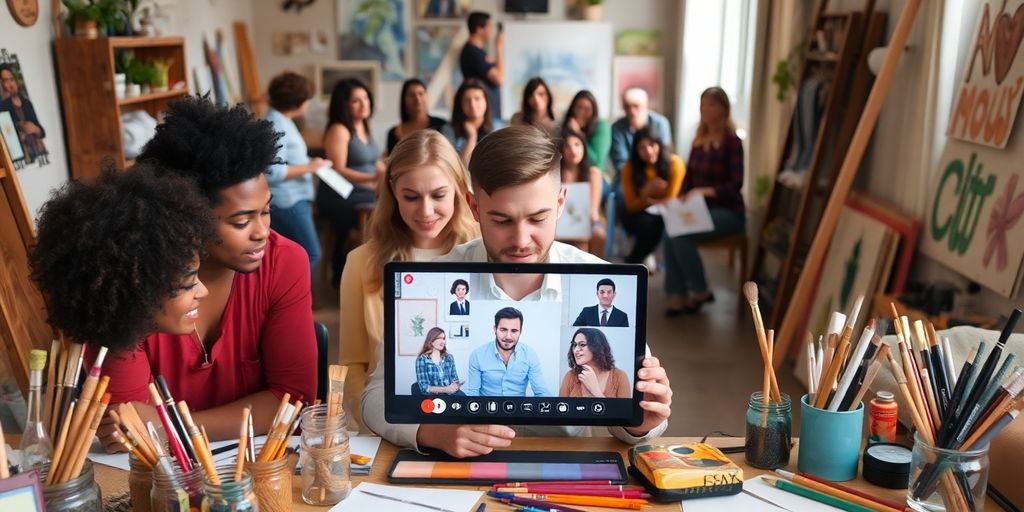
If you’re looking to explore your artistic side without the constraints of traditional art classes, there are plenty of alternatives out there. Online tutorials and local art groups offer a flexible and engaging way to learn new skills, connect with others, and unleash your creativity. Whether you prefer the comfort of your home or the camaraderie of a community, there’s something for everyone.
Key Takeaways
- Online art tutorials provide flexibility and allow you to learn at your own pace.
- Local art groups foster community and offer hands-on learning experiences.
- Combining online resources with local events can enhance your artistic journey.
- Engaging with professional artists through online platforms can offer valuable insights and networking opportunities.
- Art workshops and retreats provide immersive experiences that can deepen your skills.
Exploring Online Art Tutorials

Online art tutorials have exploded in popularity, offering a fantastic way to learn new skills or brush up on old ones from the comfort of your own home. It’s a great option if you can’t make it to traditional classes or just prefer to learn at your own pace. Let’s take a look at what makes them so appealing.
Benefits of Online Learning
Online learning offers a ton of advantages. The biggest one is probably the flexibility it provides. You can learn whenever you have the time, whether it’s late at night or during your lunch break. Plus, you can pause, rewind, and rewatch lessons as many times as you need to really grasp a concept. No more feeling rushed or embarrassed to ask questions! Here are some other perks:
- Self-paced learning: Go as fast or as slow as you want.
- Accessibility: Learn from instructors all over the world.
- Vast selection: Find tutorials on just about any art topic imaginable.
Popular Platforms for Art Tutorials
There are so many platforms offering art tutorials these days. YouTube is a great place to start for free content, but you can also find more structured courses on sites like Skillshare, Udemy, and Coursera. Many artists also offer tutorials directly through their own websites or Patreon accounts. Don’t forget about platforms like Fibre Arts Take Two, where you can find online art courses with live Q&A sessions. It really depends on what you’re looking for in terms of depth, structure, and cost.
Types of Art Covered in Online Courses
Seriously, you can find tutorials on just about anything these days. From basic drawing and painting to more specialized techniques like digital illustration, sculpting, and even mixed media, the options are endless. You can learn how to draw comics, create digital photographs, or even brush up on Art History. If you’re interested in mastering a new skill, online tutorials are a great way to start. You can even find tutorials that show you how to apply your art skills to art careers.
Online art tutorials can be a game-changer for aspiring artists. They provide a flexible, accessible, and affordable way to learn new skills and explore different art forms. Whether you’re a complete beginner or an experienced artist looking to expand your knowledge, there’s something out there for everyone.
Connecting with Local Art Groups

Finding Local Art Communities
So, you’re looking to connect with other artists? Awesome! Finding your tribe can make a huge difference. Start by checking out community centers, local libraries, and even coffee shops. Often, they have bulletin boards where art groups post announcements. Don’t forget social media! Facebook groups and other platforms are great for finding local art meetups. Also, keep an eye out for local art fairs or festivals; these are prime spots to network and discover different groups. You might even find groups focused on specific mediums, like pottery or watercolor. It’s all about putting yourself out there and seeing what’s available.
Benefits of Group Learning
Group learning offers a ton of advantages that you just can’t get from solo practice. First off, you get immediate feedback on your work. Hearing different perspectives can really open your eyes to new possibilities and help you improve faster. Plus, it’s motivating to see what others are creating and to share your own work. You can learn new techniques, discover new materials, and even find inspiration from your peers. It’s also a great way to combat the isolation that can sometimes come with being an artist.
Here’s a quick rundown:
- Constructive criticism
- Shared knowledge and skills
- Increased motivation
- Networking opportunities
Types of Local Art Events
Local art events come in all shapes and sizes, so there’s bound to be something that appeals to you. Think about attending gallery openings to see what local artists are producing and to meet other art enthusiasts. Workshops are fantastic for learning new skills in a hands-on environment. Life drawing sessions are a classic way to practice your figure drawing skills with other artists. And don’t forget about art walks, where you can stroll through your town and see art displayed in various businesses. These events are not only fun but also provide opportunities to build meaningful connections and expand your artistic horizons.
Participating in local art events can really boost your creativity and help you feel more connected to your community. It’s a chance to learn, share, and grow as an artist, all while having a good time.
Advantages of Online Art Classes
Flexibility and Convenience
Online art classes really shine when it comes to fitting into your life. You can learn whenever and wherever you want, which is a huge plus if you have a busy schedule. No more rushing to a specific location at a specific time. You can access UAL’s online short courses from your couch, during your lunch break, or even while traveling. It’s all about learning at your own pace and on your own terms. This flexibility makes it easier to commit to learning without disrupting your daily routine.
Access to Diverse Resources
One of the coolest things about online art classes is the sheer variety of resources available. You’re not limited to what’s available in your local area. Instead, you can tap into a global network of instructors, techniques, and styles. Think about it: you could be learning watercolor techniques from an artist in Italy one day and digital painting from someone in Japan the next. Plus, many online courses offer downloadable materials, video tutorials, and interactive forums, giving you a wealth of information at your fingertips.
Cost-Effectiveness
Let’s be real, traditional art classes can be expensive. Between tuition, supplies, and travel costs, it can really add up. Online art classes, on the other hand, are often much more affordable. You can find high-quality instruction at a fraction of the price, and you can often reuse materials you already have. Plus, many platforms offer free trials or introductory courses, so you can test the waters before committing to a full program. It’s a great way to explore your artistic interests without breaking the bank.
Online learning removes geographical barriers, allowing you to learn from instructors around the world. This opens up a world of possibilities, exposing you to different styles, techniques, and perspectives that you might not otherwise encounter.
Engaging with Professional Artists
Learning from Industry Experts
One of the coolest things about diving into art, whether online or in person, is the chance to learn directly from people who are actually doing it. It’s like getting insider secrets from the pros. You’re not just reading about techniques; you’re seeing them in action and hearing about the real-world application of those skills. Think about it: learning about color theory is one thing, but hearing a professional painter talk about how they use it to evoke emotion in their work? That’s next level. Plus, these experts often share tips and tricks they’ve picked up over years of experience – stuff you won’t find in any textbook. You can even investigate art careers to see what’s possible for your future.
Live Q&A Sessions
Imagine being able to ask a working artist anything you want. That’s the beauty of live Q&A sessions. These aren’t just lectures; they’re interactive opportunities to get personalized advice and insights. Got a burning question about brushstrokes? Stumped on how to mix a certain shade? Just ask! It’s like having a mentor right there with you. And it’s not just about getting answers; it’s about hearing different perspectives and approaches to art-making. It can really open your mind to new possibilities and help you refine your own artistic voice.
Networking Opportunities
Art can feel like a solitary pursuit sometimes, but it doesn’t have to be. Engaging with professional artists opens doors to networking, which is super important for growth and opportunities. Whether it’s connecting with artists online or meeting them at local events, building relationships can lead to collaborations, exhibitions, and even job opportunities. It’s about building a community of like-minded people who support and inspire each other. Plus, who knows? That artist you admire might just become a valuable contact or even a friend.
Think of networking as planting seeds. You never know which connection will blossom into something amazing. It’s about putting yourself out there, being open to new experiences, and nurturing relationships within the art world.
Combining Online and Local Learning
It’s interesting how art education is changing. You don’t have to pick just one way to learn anymore. Combining online resources with local art groups can really give you the best of both worlds. It’s like having a personal tutor and a group of friends to create with!
Hybrid Learning Models
Hybrid learning is becoming super popular, and for good reason. It lets you learn at your own pace with online tutorials, then practice those skills with others in person. Think about it: you could watch a video on color mixing, then try it out at a local painting workshop. It’s a great way to solidify what you’ve learned and get immediate feedback.
Balancing Online and In-Person Classes
Finding the right balance is key. I think it’s important to consider your learning style and schedule. Some people might prefer mostly online learning with occasional workshops, while others might thrive in a weekly class supplemented by online tutorials. Experiment to see what works best for you.
Creating a Personalized Learning Experience
The best part about combining online and local learning is that you can tailor it to your specific needs and interests. Want to learn watercolor techniques? Find some online courses and a local watercolor group. Interested in pottery? Check out online tutorials and sign up for a class at a nearby studio. It’s all about creating a learning path that’s perfect for you.
Here’s a simple way to think about it:
- Online: Learn the basics, explore different styles, and get inspired.
- Local: Practice your skills, get feedback, and connect with other artists.
- Together: Create a well-rounded and fulfilling art learning experience.
Art Workshops and Retreats
Short-Term Intensive Learning
Art workshops and retreats are great for short bursts of focused learning. They’re designed to pack a ton of information and hands-on experience into a limited time, like a weekend or a week. This can be super helpful if you want to quickly level up a specific skill or try out a new medium without committing to a longer course. It’s like an art bootcamp!
Collaborative Projects
One of the coolest things about workshops and retreats is the chance to work with other artists. Collaborative projects are common, and they push you to think differently and learn from your peers. It’s not just about individual growth; it’s about creating something together and sharing ideas. You might find yourself contributing to a large-scale mural, designing a sculpture as a team, or even putting on a mini-exhibit at the end of the retreat.
Immersive Art Experiences
Workshops and retreats often provide immersive experiences that go beyond just learning techniques. They might be held in inspiring locations, like a scenic countryside or a vibrant city, which can really fuel your creativity.
Imagine spending a week painting landscapes in Tuscany or learning pottery in a remote mountain village. These kinds of settings can help you disconnect from everyday distractions and fully immerse yourself in the art-making process. Plus, you get to meet artists from all over, which is always a bonus.
Utilizing Social Media for Art Learning
Social media isn’t just for sharing vacation pics; it’s a surprisingly useful tool for artists of all levels. You can find inspiration, learn new techniques, and connect with other creatives, all from your phone. It’s like having a global art class at your fingertips, and the best part? A lot of it is free!
Finding Inspiration on Social Platforms
Social media platforms are visual goldmines. Scrolling through Instagram or Pinterest can spark new ideas and expose you to different styles and techniques.
- Create boards or collections of images that resonate with you.
- Follow artists whose work you admire.
- Use relevant hashtags to discover new content.
It’s easy to fall into the trap of endless scrolling, so set time limits and be intentional about what you’re looking for. Use social media as a springboard for your own creativity, not a substitute for it.
Participating in Online Challenges
Online art challenges are a fun way to push your boundaries and improve your skills. These challenges often have prompts or themes, encouraging you to create something new within a specific timeframe. It’s a great way to experiment and get feedback from other artists. Look for online art courses that offer challenges as part of their curriculum.
- Search for challenges using hashtags like #drawthisinyourstyle or #artchallenge.
- Join groups or communities that host regular challenges.
- Don’t be afraid to step outside your comfort zone and try something new.
Building a Creative Community
Social media can help you connect with other artists and build a supportive community. Sharing your work, giving feedback, and participating in discussions can help you grow as an artist and feel less isolated. Engaging with other artists can be incredibly motivating.
- Share your work regularly and ask for feedback.
- Comment on other artists’ posts and offer encouragement.
- Join online groups or forums dedicated to art.
Wrapping It Up
In the end, whether you choose online tutorials or local art groups, there are plenty of ways to keep your creativity alive. Online classes let you learn at your own pace, and you can connect with artists from all over. On the flip side, local groups can give you that face-to-face interaction and community vibe that’s hard to beat. So, if you’re feeling stuck or just want to try something new, don’t hesitate to explore these options. There’s a whole world of art waiting for you, and it’s more accessible than ever!
Frequently Asked Questions
What are online art tutorials?
Online art tutorials are classes or lessons you can take on the internet to learn different art skills and techniques.
How can I find local art groups?
You can find local art groups by searching online, checking community boards, or visiting local art supply stores.
What are the benefits of learning art online?
Learning art online is flexible, often cheaper, and gives you access to a wide range of resources and teachers.
Can I interact with teachers in online classes?
Yes! Many online art courses offer live sessions where you can ask questions and get feedback from your teachers.
What types of art can I learn online?
You can learn various types of art online, including painting, drawing, photography, and digital art.
Are there any art workshops I can attend?
Yes, there are many art workshops and retreats available locally and online that focus on different art forms.
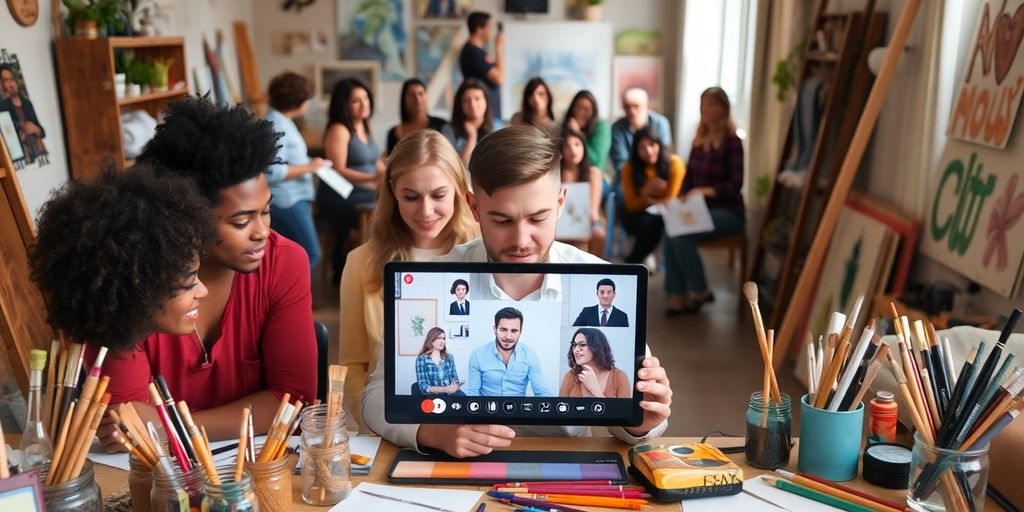
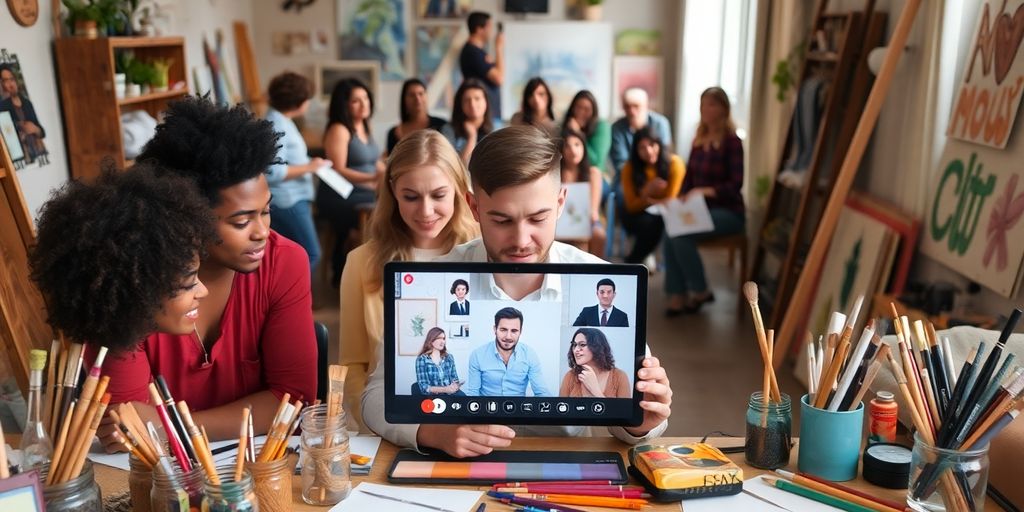


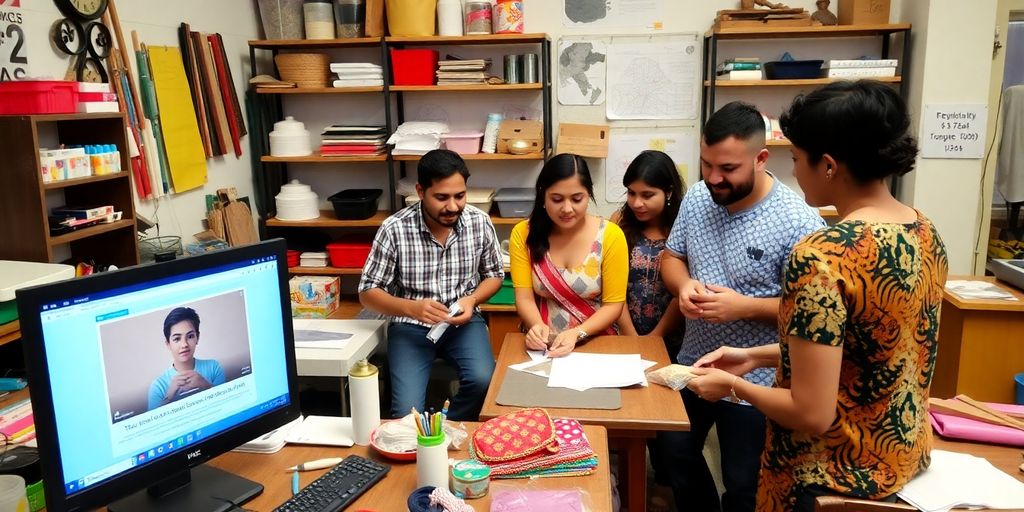
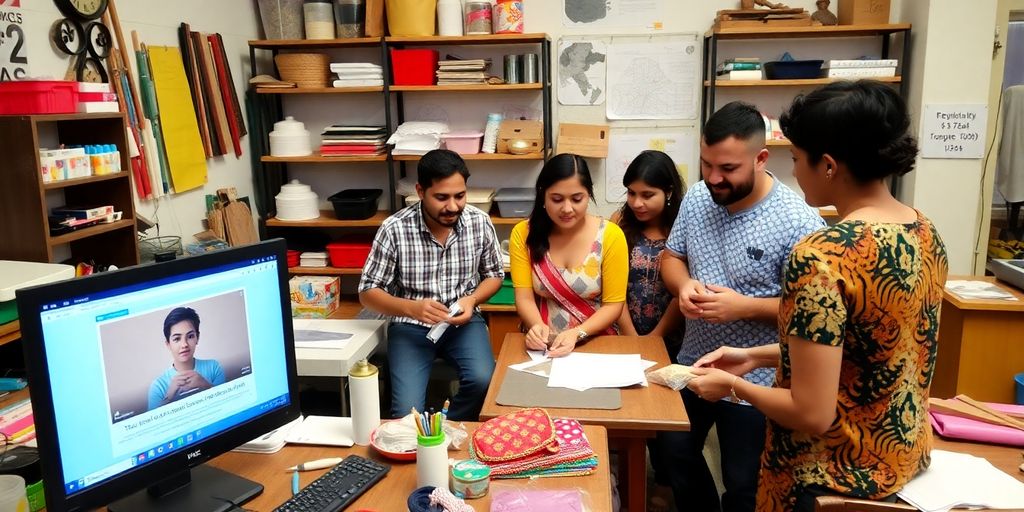
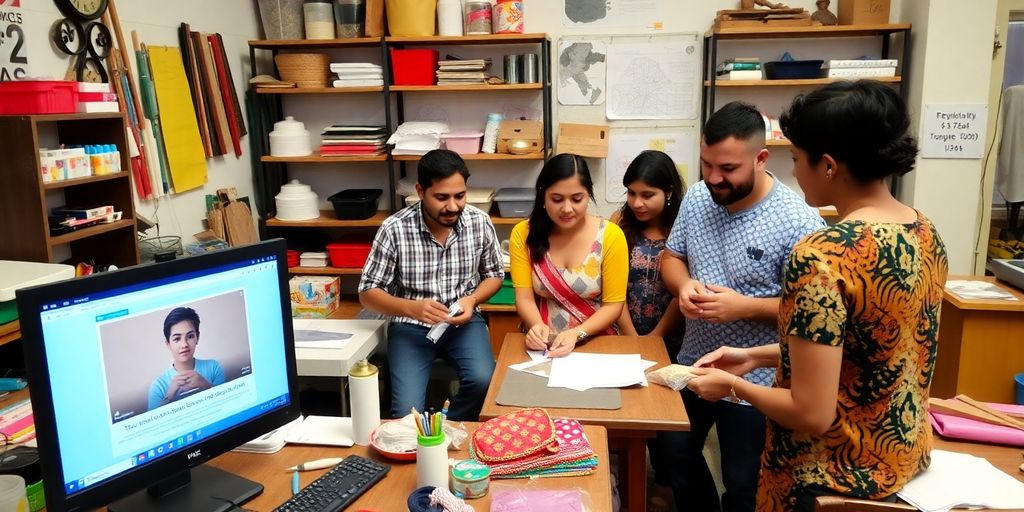
Responses